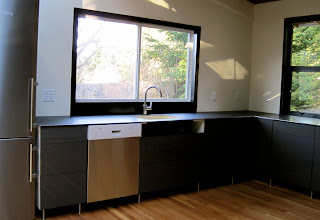Above-Jimmy of Irish Welding in his shop with Lois's 5' x 5' table sub-structure underway.
Jimmy of Irish Welding is one of those great/qualified locals. He did a great job working with me developing details for the steel counters and helping me solve the issues of the 'machine' . He's knowledgeable, easy to work with and has a fully stocked shop!
Above-a picture of the machine when the idea was still a bit fuzzy!
Below-Prebending the cold rolled rod for the spiral wrap
He also was very generous in letting us work with him in his shop to help control costs. It was a nice design build process. Between myself designing details and resolving issues and Jimmy's expertise in welding and know how and Josh's hard work and extra set of hands, we made quite the object out of another object from the dump!
Above, my hand moving as fast as my thoughts!! Below, 'the machine' being installed.
Jimmy's craftmanship assured strong connections, tidy welds and accuracy where needed. It's a 'wing it' process but good help and a solid design process makes all the difference. Everything worked and fit perfect!
Above-Joe, Matt, Josh and Brad setting the table top on the 'machine'. Photo by Lois Masin.

















